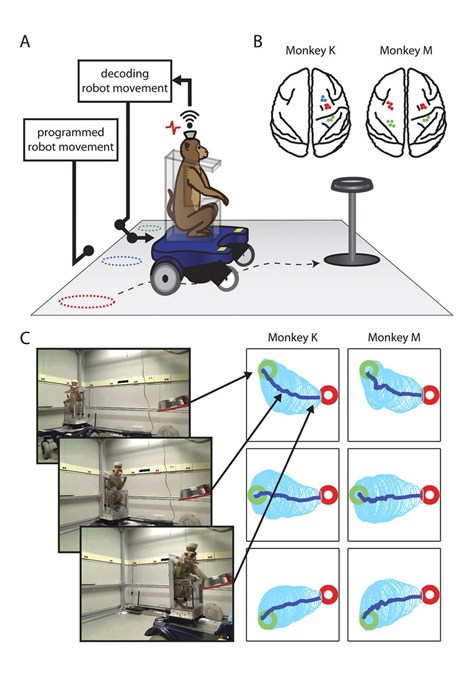A team of researchers at Duke University headed by brain interface expert Miguel Nicolelis is the reason for a recent breakthrough. They have built a wireless brain machine interface (BMI) that can control a wheelchair. This was tested on two primates. The two monkeys were able to manoeuvre the wheelchair using their mind to get to the place where a bowl of grapes was placed as their reward. Basically, the brain signals are converted into an algorithm that translates cortical activity into physical movements. Brain imaging shows that they were able to calculate distances between themselves and the grapes.
 The BMI was a wireless, high throughput multi-channel device implanted in the brain and the primates used about 300 neurons for motion. The device tracked their brain signals for trajectory to navigate toward the target. This was then used to move the wheelchair in the same path.
The BMI was a wireless, high throughput multi-channel device implanted in the brain and the primates used about 300 neurons for motion. The device tracked their brain signals for trajectory to navigate toward the target. This was then used to move the wheelchair in the same path.
This brings a tremendous opportunity for heavily paralyzed people to be able to navigate independently. This opens up a whole lot of possibilities. In future, this could be extended to include other daily activities as well where one can control all the surrounding objects by just using their mind. This is good news for Stephen Hawking, I’m sure!




